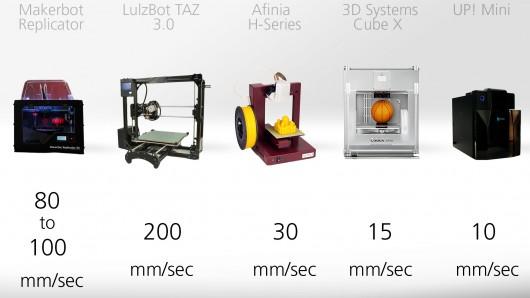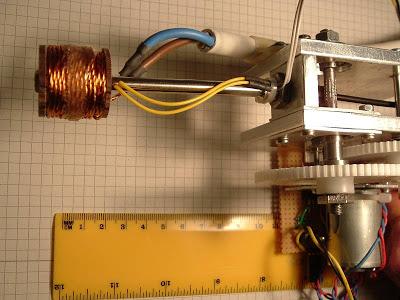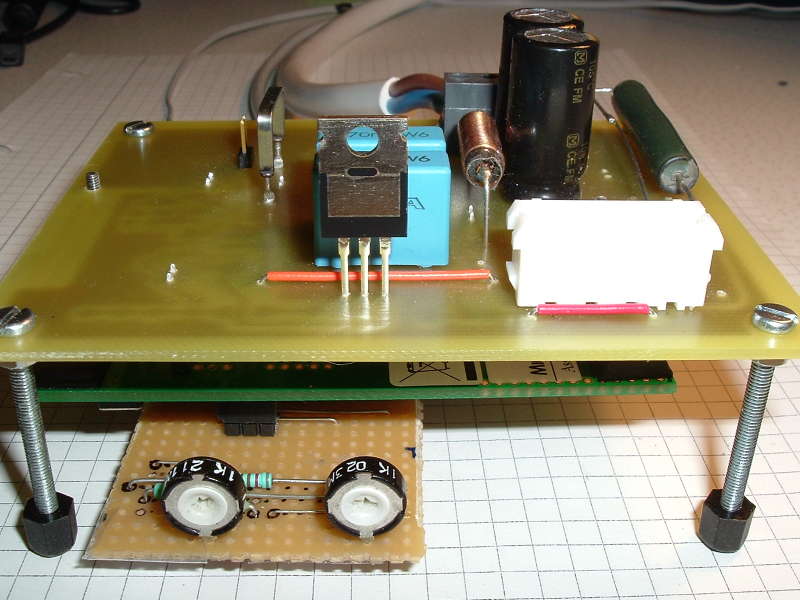 Most of us are well aware that one of the biggest issues in 3D printing, especially on the desktop, is speed. This is a fairly mainstream perception, which was demonstrated to me a few weeks ago when I fell into a weekend Netflix marathon of Grey’s Anatomy and ironically managed to plug first thing into the episode where Meredith receives a grant not only to use 3D printing, but to purchase one for the hospital as well.
Most of us are well aware that one of the biggest issues in 3D printing, especially on the desktop, is speed. This is a fairly mainstream perception, which was demonstrated to me a few weeks ago when I fell into a weekend Netflix marathon of Grey’s Anatomy and ironically managed to plug first thing into the episode where Meredith receives a grant not only to use 3D printing, but to purchase one for the hospital as well.
Comically, everyone alternately vies for use of the 3D printer as well as spying on her, watching quietly and waiting…waiting…and waiting…to see the culmination of the relentless hours of her foray into this extremely curious new technology. As she holds a meeting to show the ‘result,’ which is one small plastic fork, the looks on everyone’s faces are priceless. But it does demonstrate the point. Yes, speed could improve — especially if all you are printing is a fork.
And some recent thoughts by 3D printing enthusiast Brian Benchoff demonstrate as well the point that we could, as is the nature of most of the making and hacking community, veer off the beaten path for some greater success in 3D printing — and greater speed.
Obviously, heat is the biggest source and requirement for 3D printing with filament, causing it to melt and form into whatever 3D model we’ve commanded it to. The traditional heat source used to do this is resistant heat, which is obviously efficient enough for most of us, but what if it’s not all that difficult to do better?
“Given these heaters can suck down only so many watts, they can only heat up so fast. That’s a problem, and if you’re trying to make a fast printer, it’s also a limitation,” states Benchoff. “Instead of dumping 12 or 24 VDC into a resistive heater, induction heaters passes high-frequency AC through a wire that’s inductively coupled to a core.”
With the inductive heat not only comes speed, but of course efficiency — giving you more time to spend on designs and more enjoyable and productive creative endeavors, rather than just sitting in front of the 3D printer and watching the proverbial pot boil.
Induction heating can be achieved with a magnetic field that heats surrounding metal thanks to an induction coil.
Benchoff referred to a blog created by a graduate student, named Stefan, who created a successful system for heating up filament using just a basic brass nozzle. The project, completed in 2009 as Stefan’s final project in his last year of his master’s of engineering coursework, proved a solid starting launch point.
Stefan was able to reach 250°C and felt that higher temperatures would not be an issue. As Benchoff pointed out though, that was just a research project and did not develop into something meant to be a widespread commercial product.
At this point, using induction-heated nozzles is becoming more widespread though, with users experimenting in employing higher voltages to offer much greater speeds for 3D printing. The balance seems to be in finding high enough voltage to cause greater speed without causing a hazard.
Bulent Unalmis, who goes by ‘Z,’ has posted some interesting findings in a RepRap forum (see video below) regarding his use of induction heating for 3D printing, along with comments regarding his use of voltage levels which he considers to be low enough not to be dangerous, which was in question until he revealed that he is operating at 160 kHz AC at 30 V. His is a direct drive, fairly simple mechanical system that is working successfully — while obviously still an effort, albeit quite an amazing one, in progress.
While these new projects and systems are a rudimentary start, and as Benchoff points out, perhaps just an example of inserting more voltage to get greater speed and avoid the limitations of conventional controller boards currently, we’ll be watching and reporting with great interest as makers and hackers continue to innovate and streamline, with more 3D printing enthusiasts climbing on board and certainly achieving much higher speeds in production.
Is 3D printing with an induction-heated nozzle something you want to experiment with? Have you tried something like this previously? Tell us about it in the Use of Induction-Heated Nozzles in 3D Printing forum thread over at 3DPB.com.
[Source: Hackaday.com]Subscribe to Our Email Newsletter
Stay up-to-date on all the latest news from the 3D printing industry and receive information and offers from third party vendors.
You May Also Like
Gorilla Sports GE’s First 3D Printed Titanium Cast
How do you help a gorilla with a broken arm? Sounds like the start of a bad joke a zookeeper might tell, but it’s an actual dilemma recently faced by...
Nylon 3D Printed Parts Made More Functional with Coatings & Colors
Parts 3D printed from polyamide (PA, Nylon) 12 using powder bed fusion (PBF) are a mainstay in the additive manufacturing (AM) industry. While post-finishing processes have improved the porosity of...
$25M to Back Sintavia’s Largest Expansion of Metal 3D Printing Capacity Since 2019
Sintavia, the digital manufacturing company specializing in mission-critical parts for strategic sectors, announced a $25 million investment to increase its production capacity, the largest expansion to its operations since 2019....
Velo3D Initiates Public Offering in a Bid to Strengthen Financial Foundations and Drive Future Growth
Velo3D (NYSE: VLD) has been among a number of publicly traded 3D printing firms that have attempted to weather the current macroeconomic climate. After posting a challenging financial report for 2023,...
































